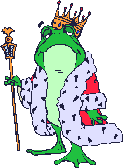|

Chu Xi critised Shao Yong's ring of 64 hexagrams as being un-natural. He meant that such fake divinations usually have illogical Time cycles.
|
Un-Natural Time Cycles
One technical feature which can significantly indicate whether a geomancy art is a fake or not is the nature of the Time cycle used.
It is common in the modern sanshi arts, and also Ba Zi and Zi Wei Dou Shu, to have forward (progressive) sequences and reverse (backward) sequences in Time calculations, e.g. in Tai Yi:
- When calculations were made after winter solstice and before the next summer solstice Taiyi would move among the palaces in the order One, Two, Three, Four, Six, Seven, Eight, Nine, One, Two, missing Five at the centre. This was called progressive movement (shunxing)or, more popularly, Yang order counting (Yangdun).25 When calculations were made after summer solstice and before the next winter solstice, Taiyi would move among the palaces in the order Nine, Eight, Seven, Six, Four, Three, Two, One, Nine, Eight, etc., missing Five at the centre. This was called reversed movement (nixing) or, more popularly, Yin order counting (Yindun ). It is found that all cases in the Historiographer's 'Remarks' in the Nan Qi shu employed only progressive movement in their calculations. (Ho. 2003. p.46, underlined author's).
However, Ho (2003. p.46) notes as above that in more ancient times, only a forward sequence was used in Tai Yi. A forward sequence was also what the Chinese imperial astrologers used in contrast to forward and reverse sequences by others:
- The third narrow band (K) lists the twelve spheres of influence, or 'houses' as they are usually known to Western astrologers... At first glance they may appear to be identical with the Western houses, but they do not correspond exactly. Nor does every Chinese astrologer agree to the order or even the direction in which they appear. Huard-Durand remarks that in Viet Nam the houses run in a clockwise direction but according to Chu-Sherill they run anti-clockwise in Fate Calculation horoscopes. Other manuals suggest that the direction of the houses is clockwise for men, anti-clockwise for women. In the I Shu Tien (the imperial version) however, all the horoscopes, for men and women, run in a clockwise direction (Derek Walters. p.293).
Western and Hindu astrology also have only one direction or sequence. The Chinese imperial version of only one clockwise direction was the more original universal feature. The counter sequence is a fake. This means that 50% of the sanshi predictions can be wrong owing to the wrong Time sequence used.
In marking the progress of Time, the most ancient tool was the use of the 28 Lunar Constellations not only in ancient China, but also in the other ancient civilisations. Eventually, a 13 Zodiac signs system emerged to mark Time and this gave way to the modern 12 Zodiac signs. In the Chinese history, the 24 Solar Terms system emerged during the Sui dynasty to help adjust the intercalary lunar month in the calendar.
During the Han and Sui dynasties, Time would be reckoned either by the 28 Lunar Constellations or the 12 Zodiac signs. These were marked on the well known "shih boards" which can show how to convert a Lunar Constellation Time to one of the Zodiac system.
- These "shih boards" eventually evolved into the Luopan. The Luopan is meant to help determine Time and not wrongly used for physical directions as common in modern Feng Shui.
Therefore, the 28 Lunar Constellations, 12 Zodiac signs and the 24 Solar Terms are all natural Time divisions, one following another in a cycle.
Da Liu Ren retains a natural Time pattern through its 12 halls chart. But the same cannot be said of Qi Men Dun Jia and Tai Yi, whose Time charts have un-natural timings:
Thus, Qi Men Dun Jia and Tai Yi have un-natural Time sequences.
top
|



